McLaren Artura review: Scaled down P1
From carbon tub, to twin-turbo V6 hybrid, to electrical and electronics architecture, this McLaren is all new.
Published on Dec 23, 2023 08:00:00 AM
14,742 Views
Follow us on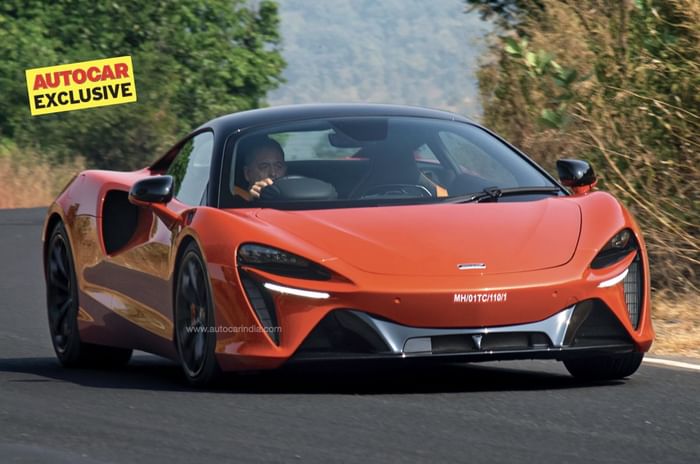
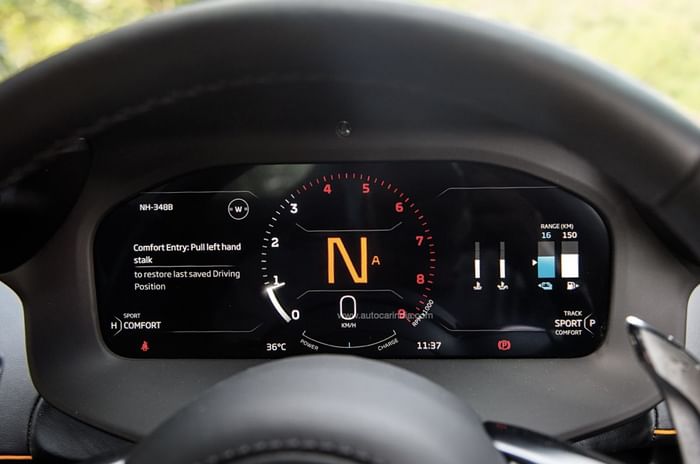
Information displayed in a very efficient manner.
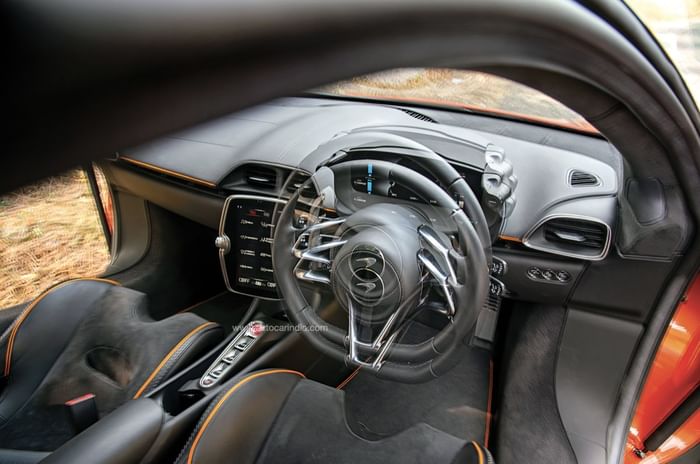
Steering adjusts along with instrument panel; neat.
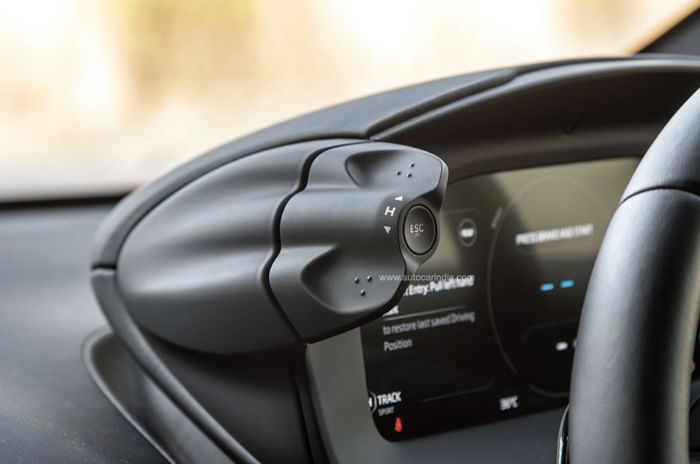
Toggles on instrument panel hood set drive modes.
We Like
- Beautifully weighted controls
- Strong, seamless performance
We Don't Like
- V6 lacks aural drama
- Feels too clinical
McLaren comes from the world of Formula 1. Just like Ferrari, just like Lotus. This gives it a very different perspective. Fundamentally different from carmakers like Mercedes, Honda or Renault – who also have Formula 1 teams – McLaren is a Formula 1 constructor first and a carmaker second.
In fact, say mid-engine, strong hybrid to a McLaren engineer and the first thing that will pop into their head is a modern Formula 1 car. Why wouldn’t it? Interestingly, this is very similar to the layout of the Artura. It gets McLaren’s new, slightly wider MCLA carbon-fibre tub; a mid-mounted 120-deg V6 engine; a powerful electric motor; and a 7.4kWh drive battery. Add in the eight-speed dual-clutch gearbox placed behind the rear axle and a 42:58 front-rear distribution, and the spec sheet looks less road and more track.
McLaren has even kept the weight down, especially for a plug-in hybrid; it weighs approximately 1.5 tonnes, depending on how you spec it and how you weigh it. The thing is, just how effective and usable is it in our conditions, how different is it to the Ferrari 296 GT – all but its soul mate when it comes to specification – and should it be on your shortlist, assuming you are lucky enough to be able to choose one?
| McLaren Artura Price, Mileage, Specifications, Features and Variants | |
|---|---|
| Brand | McLaren |
| Model Name | Artura |
| McLaren Artura Price | ₹ 5.89 crore |
| McLaren Artura Range/Mileage | Petrol Hybrid : 21.74kpl |
| McLaren Artura Specifications | Coupe | 2 doors | 2 seats View All Specs |
| McLaren Artura Features | LED headlight | 8-inch Touchscreen display | 5 airbags View All Features |
| McLaren Artura Variants | 3.0 PHEV Coupe View All Variants |
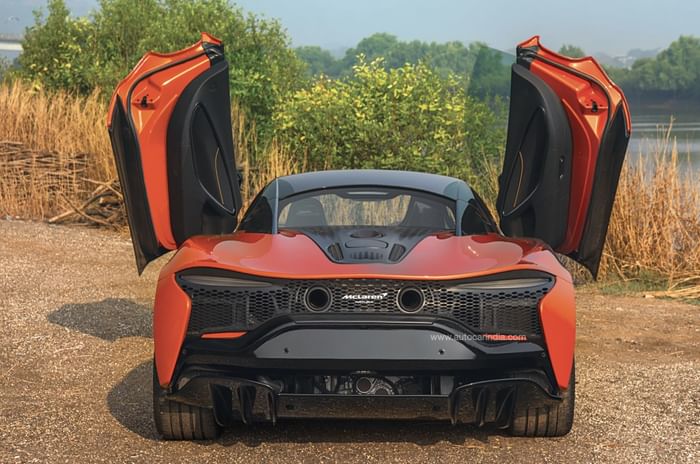
McLaren Artura design
Walking up to the ground-hugging Papaya orange Artura with its scissor doors pointing towards the sky gets my pulse racing. The multi-layered nose with its drooping headlights gets my attention next, and what I notice is a proliferation of air inlets, heat exchangers, radiators and intercoolers. There must be at least half a dozen visible; there are a couple of massive ones up front in the nose, the side-pods have both air inlets and heat exchangers and around the rear, under the tail-lights, are what look like massive intercoolers.
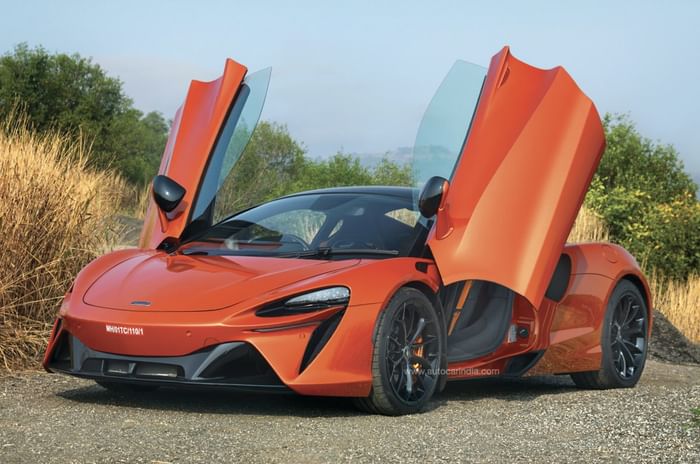
And get low and you can see almost the entire gearbox sticking out at the back. When viewed in profile, the Artura isn’t as long as a 720 or 750, and doesn’t have that elongated engine bay post the passenger pod, but what it does have are interesting and well-designed details everywhere you look, and that sort of grabs and holds your attention.
The Artura is also the first McLaren to have an electronically controlled differential or an E-diff and the Artura also features McLaren’s Variable Drift Control (VDC), which allows the driver to adjust the amount of traction control used via a slider on the touchscreen.
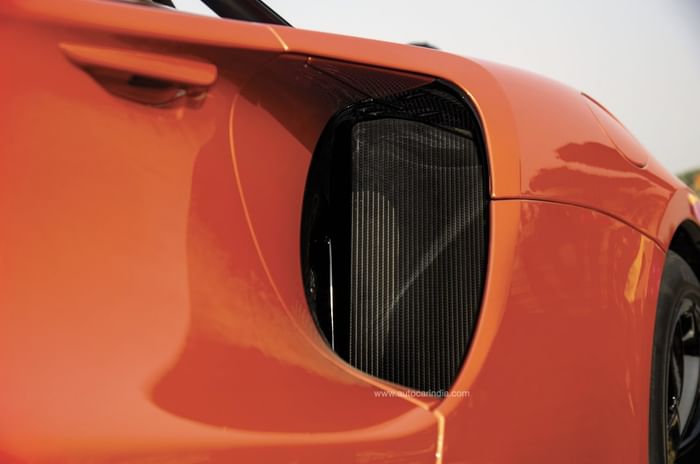
McLaren Artura interior
Climb into the Artura and there’s no doubt the butterfly doors make for fantastic theatre. Unlike a Lamborghini, however, which feels like getting into a spaceship, the Artura feels less dramatic.
The McLaren’s cabin is clearly more functional. Functional, however, doesn’t mean practical; there’s no glove box, the centre console is super slim and the touchscreen is nothing more than a vertically aligned mini tablet. The latter does get an interesting mode button on the left, which makes it easier to use, but all-encompassing, all-singing, all-dancing Merc MBUX system it isn’t.
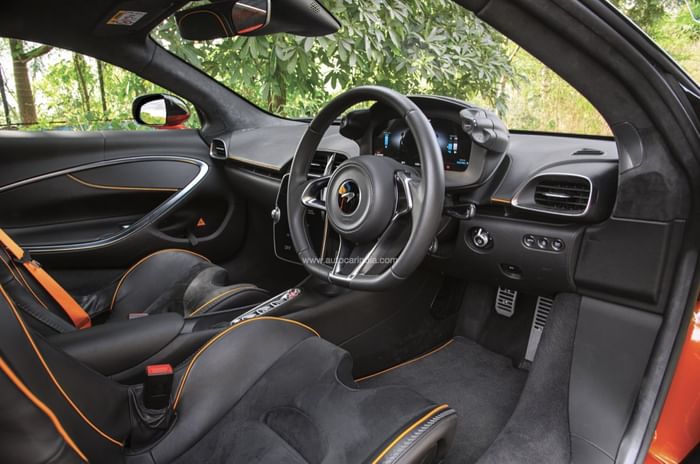
Comfort levels, however, are surprisingly good. The ‘racing’ bucket seats are easy to get comfy in, and there’s enough wiggle room in the seat – surprise-surprise – my back, shoulders and hips are superbly supported and comfort, even over the span of a day, is surprisingly good for a seat of this type. You can even raise or lower the seat marginally, via a small electrically operated switch on the side.
Seats apart, there are several clever bits around the cabin. The door pockets curl up and will hold on to your knick-knacks even when they are raised vertically, driver and powertrain modes can be selected easily via two butterfly toggle levers on either side of the instrument panel, and some nicely built slots on either side of the transmission tunnel hold smartphones. The instrument binnacle, however, also works as the screen for the reversing camera and this gets fowled by the steering wheel as soon you turn the wheel.
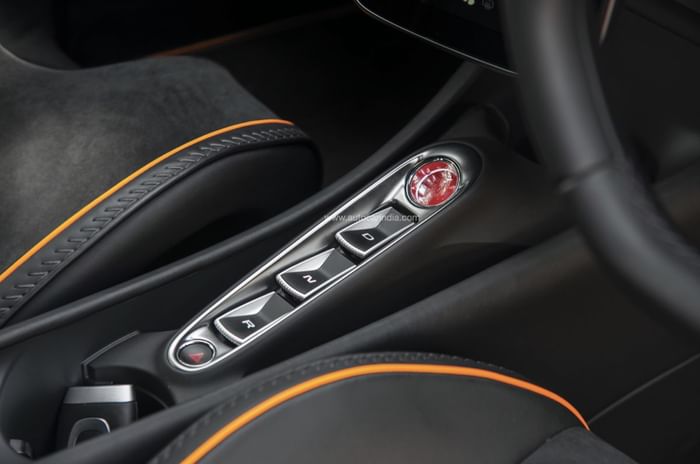
McLaren Artura ride quality
First impressions from behind the wheel as I get out onto the road are of a car that feels impossibly low. I stop immediately and locate the nose lift button; it works like a charm. It’s easy to activate, an indicator on the dash tells you when the process is finished and this allows the car to clamber over some seriously large examples on the way out to our test route. So despite ground clearance appearing to be paper thin, you can take the Artura practically anywhere. Sure, it will be a bit of an adventure, but if you are keen to get to the good roads, as you should, you certainly can.
In its most comfortable setting, the Artura also rides well. Sure, there’s plenty of stiffness in the springs and the suspension feels reactive over some bad patches, but what it also does is absorb a lot of the road, placing a relatively thick layer of insulation between the road and the car. And what’s also good is that once up to speed, most bumps are ridden over with greater deftness and more suppleness.
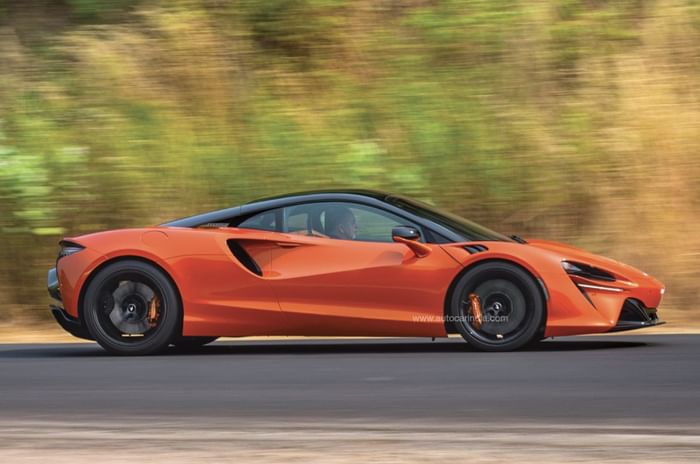
McLaren Artura handling
As with all McLarens, the strong all-encompassing driver focus is difficult to miss. This becomes apparent as soon as you get it up to speed, the increase in pace bringing all manner of driver-centric forces together.
First up, the driving environment, which feels second to none. You are sat low, towards the centre of the car – as Gordon Murray always intended – the road streaking and funnelling under you in a blur. What helps you feel completely on top of everything is loads and loads of feel and feedback from the hydraulically assisted steering. The connect between the steering system and the wheels is so good, I feel the car transfer weight from one corner to the other, I always seem to know just how much grip there is in reserve, and then, what makes me relax is that the steering functions in a relaxed and laid-back manner.

So while the steering is full of feel and very accurate, it isn’t hyperactive or lightning quick like the one on the Ferrari 296 GTB. This makes the McLaren feel less agile and more stoic in its demeanour. That’s not to say it is less pleasurable or fun, it’s just that you have to work it a bit harder. But there’s plenty of feel, so when the front wheels start shuffling and the rears start getting loose, the Artura’s steering sends more information through to you.
Adding to the greater feel and connect are the brakes. Kept free of the corrupting effect of e-motor driven regeneration and the need to blend the friction brakes in, the carbon ceramic discs come with lightweight calipers and measure 390mm at the front and 380mm at the rear. Like most McLarens, pedal feel isn’t boosted as much as on other supercars, so initially the brakes feel like they lack bite. But you learn to use more pedal effort, and there’s much more feel and confidence as you scramble towards the apex. This allows you to get back on the throttle earlier. That said, there is a tiny amount of numbness as you transition from brake to accelerator, and this sort of dulls the experience a bit.
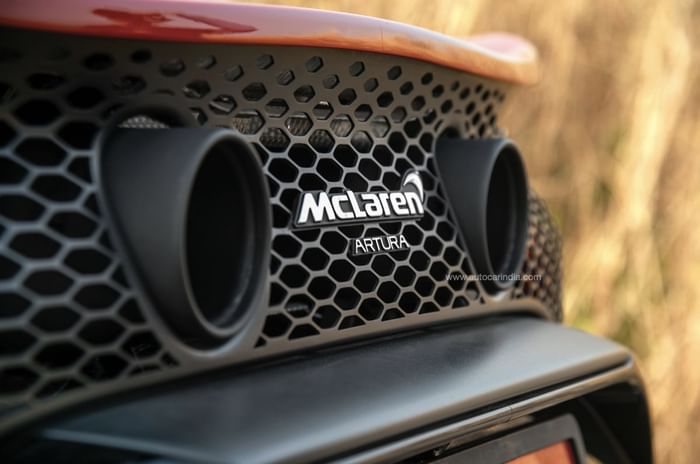
McLaren Artura performance
With 95hp of electric boost and a combined 680hp, the Artura also has plenty of instantaneous grunt. The electric motor, especially in Sport, is quick to react, and what adds immeasurably to driving pleasure is that the twin-turbo V6 overlaps seamlessly and helps deliver a single strong wave of performance that shoves you back firmly in the driver’s seat and holds you there.
While power delivery isn’t as explosive as the Ferrari 296 GTB and the top end nowhere near as frenzied, the Artura still runs up to an 8,500rpm redline. Unsurprisingly, the Artura is seriously quick; 0-100 and 0-200kph coming up in a claimed 3.0 and 8.3 seconds, respectively. The V6 even sounds nice, not mercurial but sporty, with its urgent bark making the drive more entertaining. To understand just how quick the Artura is, get this, the 830hp Ferrari is only around a second faster to 200kph.
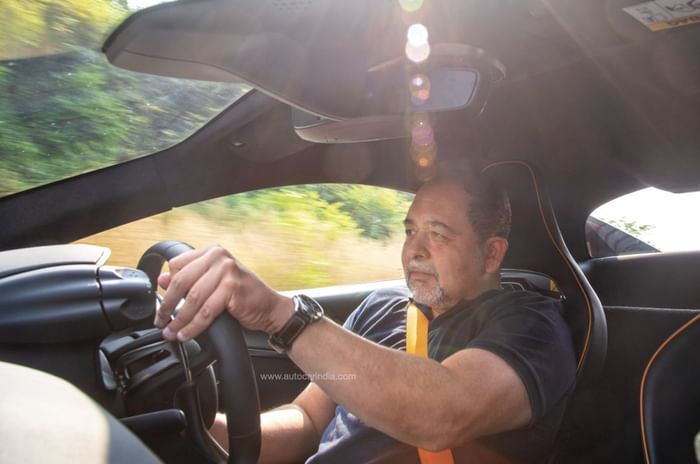
In fact, driven on a well-paved winding road, like it should be, power delivery is so quick and strong, you can only use full throttle for brief spells. So while engaging Track Mode does amp up the experience even further, and does tighten up the handling even further, you need to be selective and use it only on the best, blemish-free surfaces. And in India, that’s hard.
Even the dual-clutch gearbox gels nicely with the setup. It’s quick to execute a downshift, delivers clean and fast upshifts and feels unobtrusive to use at regular speeds.
As with other plug-in hybrids, the Artura also has an electric-only mode, with a claimed range of 31km. Once you plug it in, 80 percent of the battery can be charged in two and a half hours.
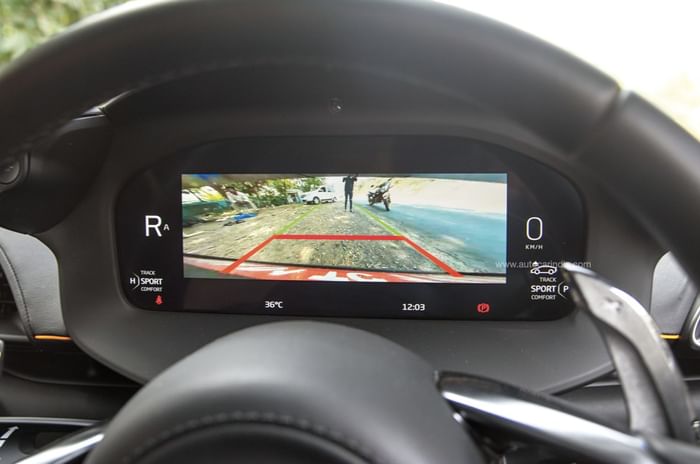
McLaren Artura verdict
Supercars are meant to be extroverts and bold and brash, but what the McLaren has on offer here with its pure driving experience and smart plug-in hybrid tech is a very alluring alternative. Its Clark Kent-like demeanour may not be in sync with what you expect and this isn’t the supercar for those looking for the most raw, exciting and unfiltered experience. The McLaren Artura is rather like the quiet kid in the back of the class that, when called upon, can deliver the goods with devastating effect. So those looking for a more focused and measured but equally rapid plug-in hybrid supercar will do well to place the Artura on top of their list. English charm works just as well as Italian flair.
Also see:
McLaren Artura launched at Rs 5.1 crore
Tech Specs 
Copyright (c) Autocar India. All rights reserved.


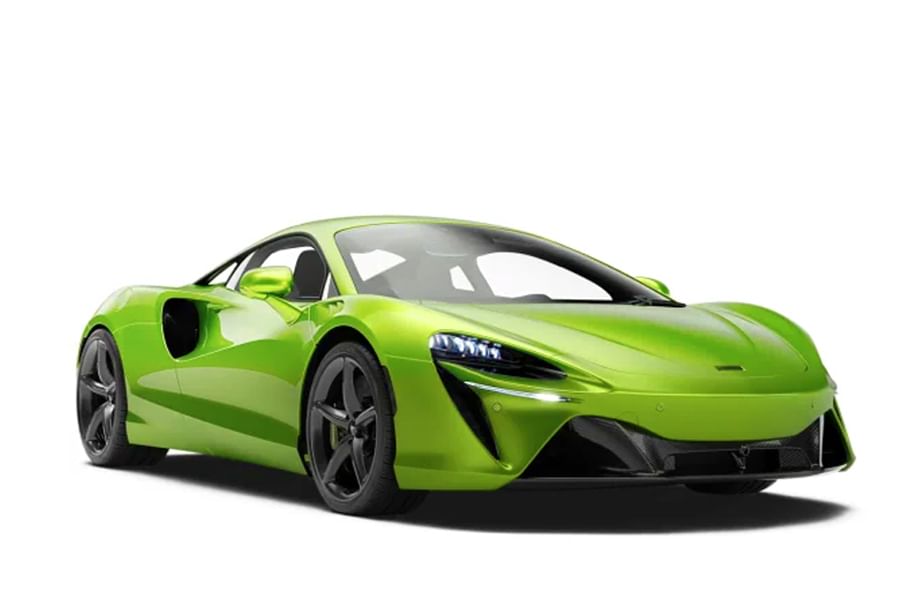

 Price
Price Engine
Engine Transmission
Transmission Acceleration
Acceleration Body
Body Suspension
Suspension Steering
Steering Brakes
Brakes Dimensions
Dimensions
Comments
Member Login
Personal Details
No comments yet. Be the first to comment.